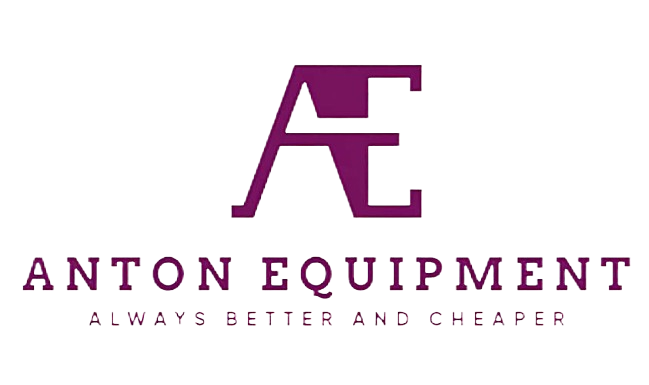News
Hydraulic Breaker Technology: Redefining Demolition Efficiency
Core Components of Hydraulic Breaker Technology
How Hydraulic Breakers Transform Demolition Workflows
Hydraulic breakers are revolutionizing demolition workflows by offering unmatched efficiency and precision in breaking down concrete and other materials. By using these powerful tools, we significantly reduce the need for manual labor, creating safer work environments and accelerating project timelines. This efficiency can lead to significant cost reductions, making hydraulic breakers indispensable in modern demolition projects. Industry leaders report that using hydraulic breakers can decrease demolition time by up to 30%, highlighting their effectiveness in projects where time is of the essence.
The ability to quickly and accurately break through tough materials with hydraulic breakers not only speeds up demolition but also enhances precision, minimizing collateral damage to surrounding structures. This precision is crucial, especially when working in densely populated or delicate environments, where control is paramount. Furthermore, the reduced labor requirements contribute to less fatigue and risk for workers, ensuring that job sites are not only more efficient but also much safer.
Key Features Enhancing Impact Force & Durability
The impact force of hydraulic breakers is augmented through refined engineering, enabling them to tackle more challenging materials with ease. Advanced design features, such as improved piston technology and optimized hydraulic flow, ensure that the equipment delivers maximum power when it is most needed. Such innovations mean that even the toughest demolition tasks are handled with remarkable efficiency.
Durability is another essential quality of hydraulic breakers, with features like nitrogen gas cushioning playing a vital role in extending their lifespan. This cushioning reduces the wear on internal components, ensuring that the equipment remains operational for longer periods and minimizing costly replacements. Additionally, when choosing the right hydraulic breaker, it's crucial to consider factors such as impact frequency and weight classification to match the breaker to specific demolition needs effectively. This selection process ensures that the equipment not only delivers superior performance but also maintains its operational integrity over time.
Optimizing Machinery Compatibility
Integration With Skid Steer Attachments
Integrating hydraulic breakers with skid steer attachments significantly boosts versatility in demolition projects. This setup allows operators to efficiently switch between various tasks without the need to change machinery. It enhances capability, ensuring that the same pieces of equipment can be used across different project phases. When hydraulic breakers are compatible with existing equipment, it reduces the necessity for further investment in new machinery, thus streamlining workflows. Industry data suggests that leveraging the capabilities of current machinery through attachments can save up to 20% in procurement costs. This approach not only economizes on expenditures but also optimizes resource utilization on site.
Mini Excavator Attachments for Precision Work
Mini excavators fitted with hydraulic breaker attachments offer enhanced precision in demolition tasks, making them especially valuable in confined spaces. This combination enables more controlled breaking actions, mitigating the risk of unintentional damage to surrounding structures. Such precise demolition is vital in urban settings where neighboring structures must remain intact. Research indicates that employing specialized attachments can substantially cut operational costs in urban demolition projects by improving efficiency and minimizing worksite disturbances. By integrating hydraulic breakers with mini excavator attachments, operators can navigate tight spaces and intricate demolition needs effectively and economically, ensuring project deliverables are met without compromising safety or quality.
Quick Coupler Advancements
Quick Coupler Excavator Systems for Rapid Tool Changes
Quick coupler systems revolutionize the way we handle excavators by allowing rapid attachment changes, effectively reducing downtime and increasing productivity. These systems are designed to facilitate the swift switching of attachments tailored for specific tasks, making machinery on the job site more versatile and adaptable. Industry statistics highlight that projects utilizing quick couplers achieve up to a 50% increase in task completion speed due to the minimized delay in equipment changes. This efficiency generates significant cost savings and enhances the overall operational workflow, fulfilling diverse project requirements without the need for constant manual intervention.
Mini Skid Steer Attachment Flexibility
Quick coupler advancements are not limited to large machinery—they also extend to mini skid steers, significantly boosting their flexibility in various applications. Operators can easily swap between different attachments, such as grapples, buckets, and hydraulic breakers, optimizing operational effectiveness in confined or tight-site conditions. Surveys indicate that businesses adopting flexible quick couplers for mini skid steers see remarkable improvements in productivity and project adaptability. This enhanced flexibility allows these compact machines to tackle a broader range of tasks efficiently, adapting to the evolving needs of modern construction sites and minimizing interruptions in the workflow.
Efficiency Metrics in Modern Demolition
Reducing Project Timelines Through Hydraulic Power
Harnessing hydraulic power significantly enhances efficiency in modern demolition projects. By using advanced hydraulic technology, we can achieve faster material breakdown, accelerating workflows and allowing us to complete projects ahead of schedule. This is crucial for successful project management, as it not only improves time efficiency but also reduces labor demands and costs. Recent industry analyses document that hydraulic-driven machinery can reduce typical project timelines by weeks, leading to heightened client satisfaction. The efficiency metrics provided by hydraulic systems are indispensable for optimizing project management and pushing the boundaries of what is possible in demolition.
Cost Savings From Reduced Equipment Downtime
In demolition projects, reducing downtime is crucial for maximizing profit margins, and hydraulic systems are engineered for reliability and durability. Effective maintenance strategies for hydraulic breakers are essential in preventing costly delays, ensuring equipment remains operational throughout the project. This approach guarantees not only the productivity and efficiency of the demolition process but also substantial economic benefits. Studies in the economic sector highlight that by minimizing equipment downtime, project costs can be cut by as much as 15%. Such reductions in downtime lead to substantial savings and illustrate the critical role hydraulic systems play in effective and profitable demolition processes.
Future Trends in Demolition Technology
The landscape of demolition technology is rapidly evolving, with future trends focusing on sustainability, efficiency, and advanced machinery. As cities expand and the demand for renewal grows, demolition technologies are adapting to meet these needs more effectively. Innovations such as smart machinery equipped with AI and machine learning are beginning to play a pivotal role. This technology enables operators to optimize workflows and enhance precision in tearing down structures. Such advancements are not just about brute force but intelligent applications of technology that prioritize urban development's environmental and safety aspects.
One notable trend is the incorporation of eco-friendly practices in demolition processes. Recycling and reusing materials have become central themes, reducing waste and conserving energy. Demolition companies are progressively investing in equipment that supports these practices, ensuring sustainability in future construction and demolition projects. Additionally, the usage of building information modeling (BIM) tools helps project planners visualize and manage demolition activities seamlessly, contributing to reduced material waste and improved efficiency. As a result, professionals within the industry are better equipped to deliver on the promises of both economic and environmental returns.
Mechanization innovations also dominate future trends, particularly in the rise of advanced attachments for skid steers and mini excavators. These attachments, including hydraulic breakers and quick couplers, enhance the versatility and efficiency of machinery used in demolition projects. Such technology minimizes manual labor and accelerates project timelines immensely. They are essential tools in modern demolition, offering precision and power in confined urban spaces where traditional demolition methods are impractical. These advancements underscore a shift towards more intelligent, adaptive machinery that meets the escalating demands for efficient and sustainable demolition solutions.












































